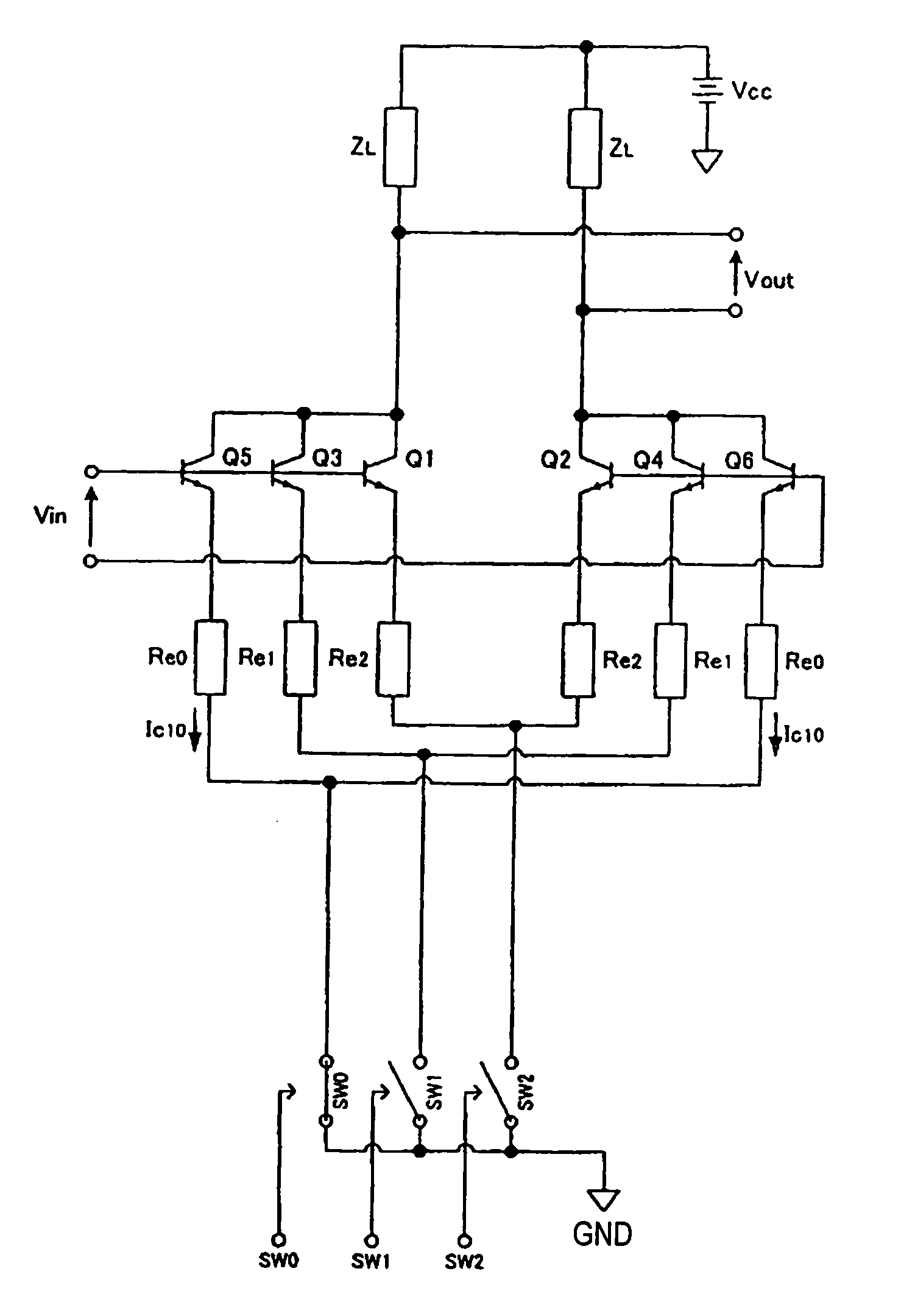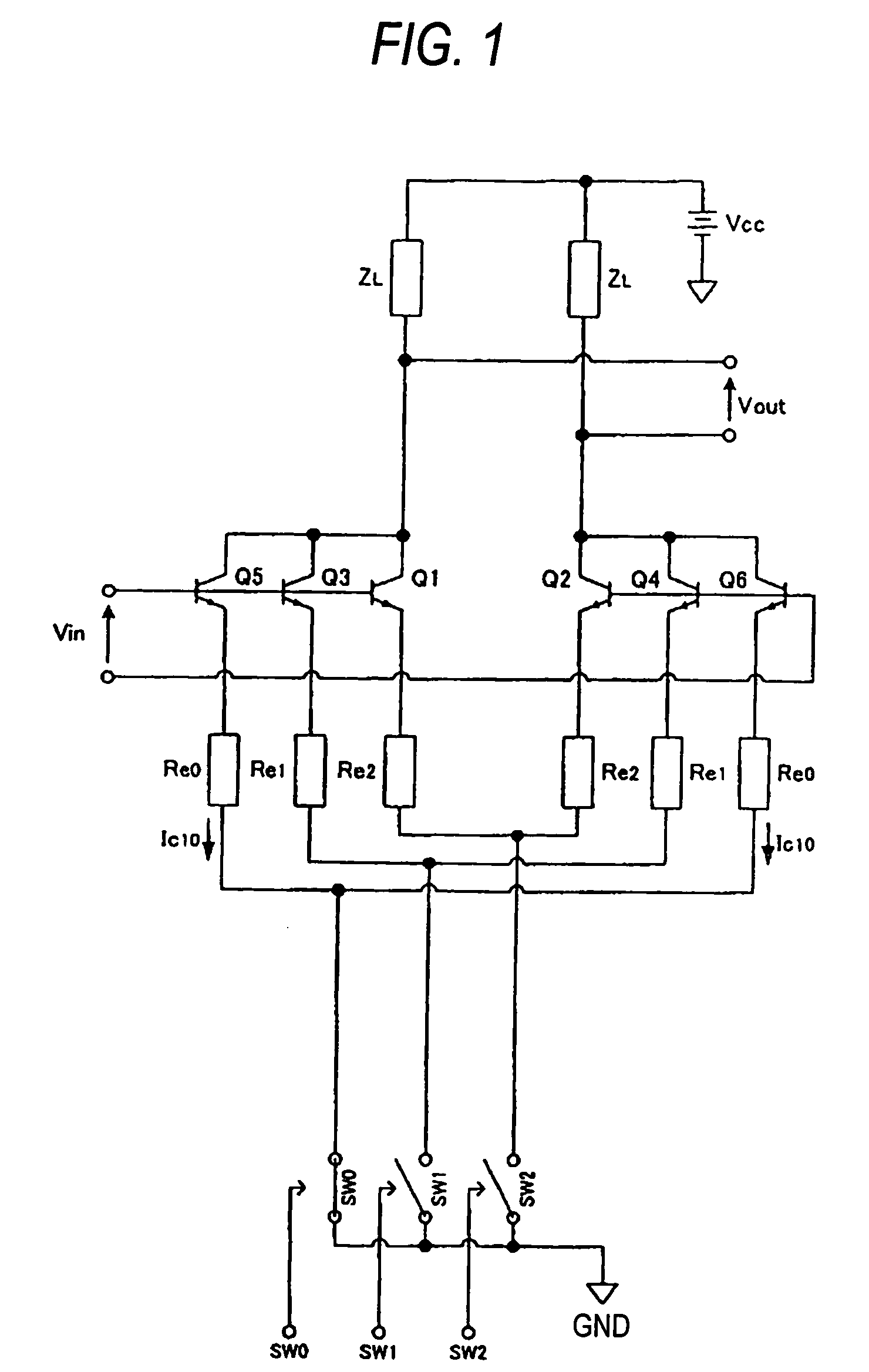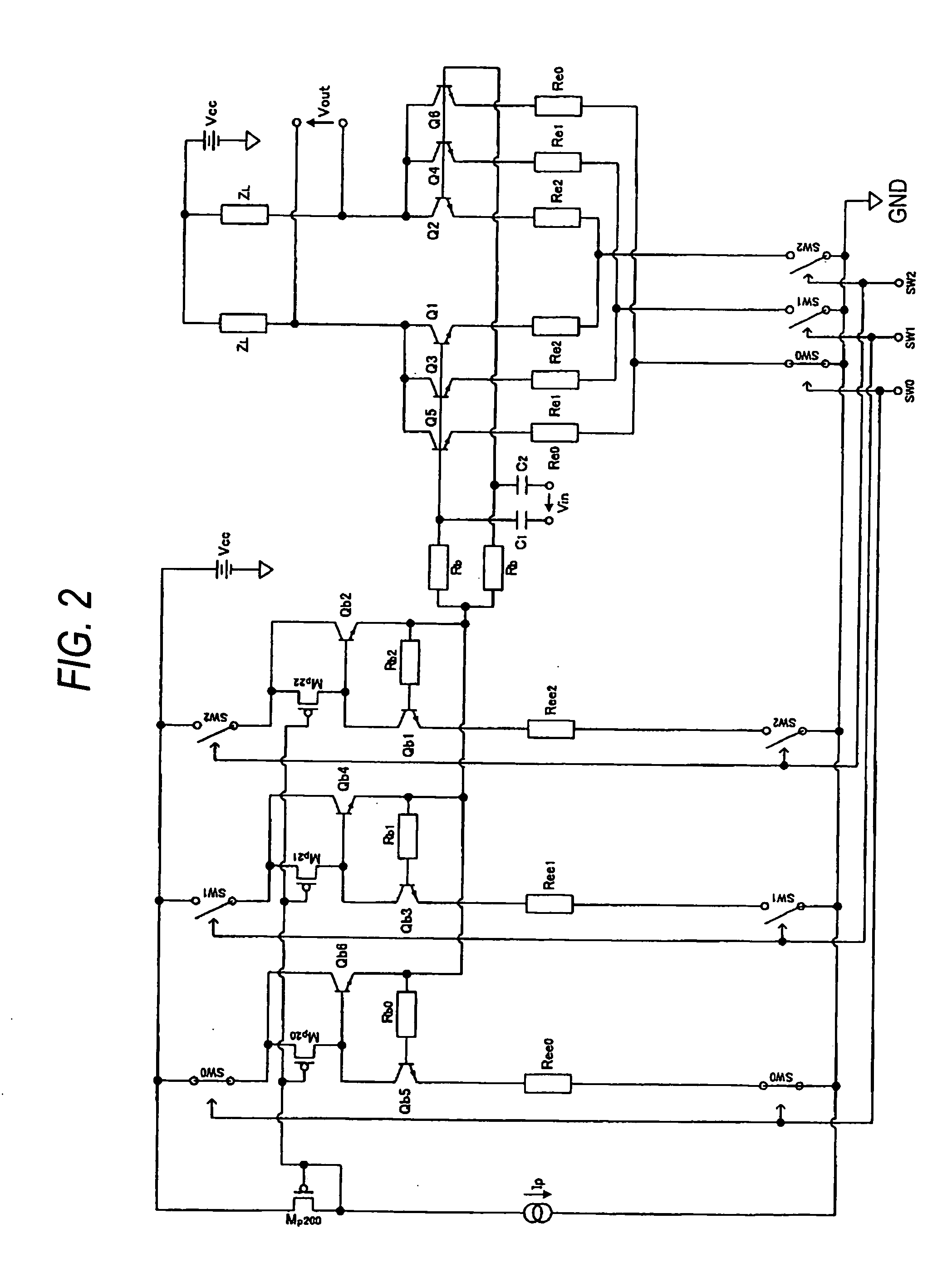Variable gain amplifier circuit and radio machine
a gain amplifier and amplifier circuit technology, applied in the direction of gain control, analog signal digital control, manual operation gain control, etc., can solve the problem of constant current consumption and achieve the effect of reducing current and free of deterioration of distortion characteristics
- Summary
- Abstract
- Description
- Claims
- Application Information
AI Technical Summary
Benefits of technology
Problems solved by technology
Method used
Image
Examples
first embodiment
[0094]FIG. 1 is a circuit diagram showing a variable gain amplifier circuit according to a first embodiment of the invention.
[0095] The variable gain amplifier circuit according to the first embodiment of the invention is formed such that the bases of bipolar transistors Q1, Q3 and Q5 and the bases of bipolar transistors Q2, Q4 and Q6 are connected in common with each other, these bipolar transistors forming a plurality of common-emitter amplifier circuits; a switch SW2 is connected to the emitter sides of the bipolar transistors Q1 and Q2; a switch SW1 to the emitter sides of bipolar transistors Q3 and Q4; and a switch SW0 to the emitter sides of the bipolar transistors Q5 and Q6. Thus, the desired common-emitter amplifier circuit can be selected by each of the switches SW2, SW1 and SW0.
[0096] With the arrangement of FIG. 1, when any emitter side of a bipolar transistor pair is held at ground potential gnd by switching on / off the switches SW2, SW1 and SW0 by means of a control si...
second embodiment
[0108]FIG. 5 is a circuit diagram showing a variable gain amplifier circuit configuration according to a second embodiment of the invention.
[0109] The variable gain amplifier circuit according to the second embodiment of the invention is such that the differential type circuit in the differential form shown in FIG. 1 according to the first embodiment of the invention is changed to a single-ended type one. This variable gain amplifier circuit is formed such that the bases of bipolar transistors Q1, Q3 and Q5 forming a plurality of common-emitter amplifier circuits are connected in common with each other and that switches SW2, SW1 and SW0 are connected to the respective emitter sides thereof.
[0110] The circuit operation is the same as what is described in the first embodiment of the invention. When the emitter side of any bipolar transistor is held at the ground potential gnd in the configuration of FIG. 5 by switching the switches SW2, SW1 and SW0, the bipolar transistor operates a...
third embodiment
[0112]FIG. 6 is a circuit diagram showing a variable gain amplifier circuit configuration according to a third embodiment of the invention. The third embodiment of the invention refers to a partially modified example of the first embodiment of the invention above.
[0113] The difference in configuration between the third embodiment of the invention and the first embodiment thereof is that emitter degeneration resistors Rec0, Rec1 and Rec2 in phase are added to the respective bipolar transistor pairs; the rest is configured as in the first embodiment thereof. The resistance value ratio of each of the emitter degeneration resistors Rec0, Rec1 and Rec2 in phase is set inversely proportional to the emitter area ratio like the emitter degeneration resistors Re0, Re1 and Re2 so as to satisfy the relation of an equation 6c below.
Rec0 / 4=Rec1 / 2=Rec2 (6c)
[0114] The collector current ratio can thus be kept constant. As the voltage gain of the in-phase signal is made reducible by adding the e...
PUM
 Login to View More
Login to View More Abstract
Description
Claims
Application Information
 Login to View More
Login to View More - R&D
- Intellectual Property
- Life Sciences
- Materials
- Tech Scout
- Unparalleled Data Quality
- Higher Quality Content
- 60% Fewer Hallucinations
Browse by: Latest US Patents, China's latest patents, Technical Efficacy Thesaurus, Application Domain, Technology Topic, Popular Technical Reports.
© 2025 PatSnap. All rights reserved.Legal|Privacy policy|Modern Slavery Act Transparency Statement|Sitemap|About US| Contact US: help@patsnap.com



